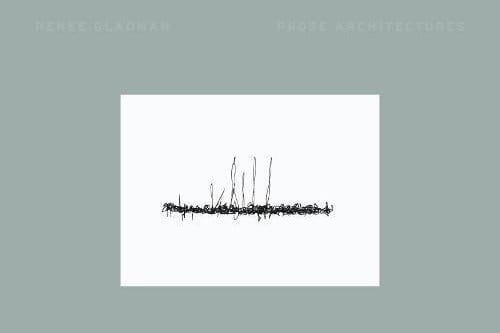Thom Donovan Examines Renee Gladman's Fantastically Calamitous Prose

Thom Donovan provides a critical reading of Renee Gladman's evolution from writing to drawing, focusing on two of her latest collections: Calamities and Prose Architectures (both published by Wave Books). "When Renee Gladman’s Calamities was published in 2016, I was instantly captivated by the ways it recounts the author’s life as a writer. [...] Some of the book’s most compelling passages concern the origins of her drawing practice, and the relationship between drawing, writing, and autobiography," Donovan remarks. Let's step in, starting there:
In this way it illuminates how Gladman got from the works of her early career to her most recent book of drawings, Prose Architectures.
I began the day standing at a threshold of time […] In a moment, Angela Rawlings declared her love for Iceland. I could see her threshold between her feet. Rachel Levitsky had a threshold. Martha had just crossed hers. Stacy kept changing her name. We were all trying to end something and were finding something new in the process, though what we found didn’t seem to belong to us exclusively.
[…] if I was no longer going to write, as I had begun to worry that I wouldn’t, then I should at least write about not-writing. And was so struck by the idea that I rose from the tub, dripping, to jot it down, which I was now doing. I was writing down the idea “I no longer wish to write” by writing down that I was writing it down. I wanted a threshold to open that also would be like a question, something that asked me about my living in such a way that I could finally understand it.
I have wondered if the seed of Prose Architectures lies in what Gladman refers to throughout Calamities as “thresholds”: the moment when something (or someone) becomes something else, however intangibly or invisibly; the moment when writing crosses over into another mode of expression. Such an investigation has innumerous precedents: identifying the thresholds separating art and life was a defining preoccupation of 20th century avant-gardes.
Read on at Hyperallergic.


